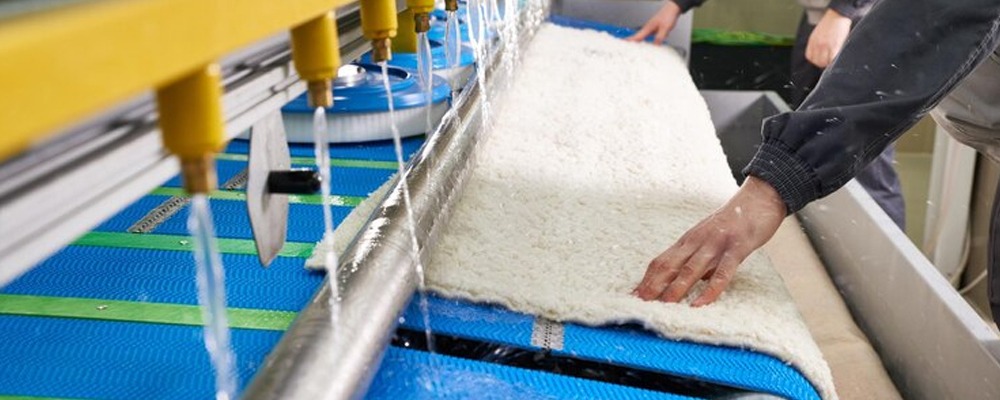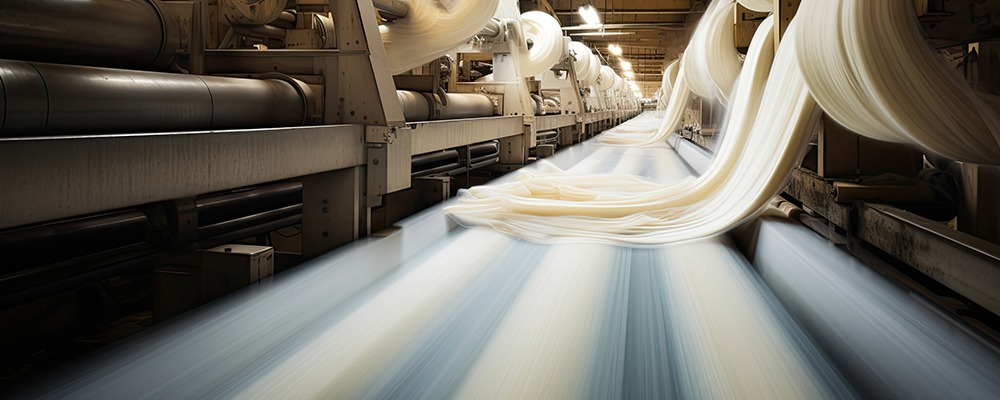The textile industry is one of the largest and most essential sectors in the world, providing employment to millions and meeting the ever-growing demand for fabrics. However, it is also one of the most resource-intensive industries, known for its heavy water usage, chemical pollution, and high energy consumption. In recent years, sustainability has become a major focus, pushing manufacturers to explore greener alternatives that reduce environmental impact while maintaining high production efficiency. One such game-changing innovation is the use of enzymes in textile processing. These naturally occurring biocatalysts offer an eco-friendly solution to traditional chemical-based methods, leading the way towards a more sustainable future.
The Environmental Impact of Traditional Textile Processing
The conventional textile manufacturing process involves several stages, including desizing, scouring, bleaching, dyeing, and finishing. Each of these steps typically relies on harsh chemicals that contribute to pollution and excessive water consumption. For instance, synthetic detergents and alkaline solutions are used to remove impurities from raw fibres, while chlorine-based bleaching agents brighten fabrics. These chemicals, when discharged into water bodies, cause severe ecological damage, affecting marine life and contaminating freshwater sources.
Additionally, textile production is highly energy-intensive. The heating of water for processing, along with the mechanical agitation involved in chemical treatments, results in a significant carbon footprint. With increasing global awareness of climate change, the industry is under pressure to adopt sustainable alternatives that reduce environmental degradation without compromising the quality of textile products.
The Role of Enzymes in Sustainable Textile Processing
Enzymes, derived from natural sources such as bacteria and fungi, serve as an effective alternative to harmful chemicals in textile processing. These biological catalysts work efficiently under mild conditions, significantly reducing the need for high temperatures and strong chemicals. As a result, enzyme-based processing leads to lower water consumption, reduced energy requirements, and minimal environmental impact.
Unlike conventional chemical treatments that often weaken fibres and produce hazardous waste, enzymatic treatments selectively break down unwanted components without damaging the fabric’s structure. This property makes enzymes an ideal choice for textile manufacturers looking to enhance fabric quality while embracing eco-friendly production methods.
Key Enzymes Used in Textile Processing

Various types of enzymes are used in different stages of textile manufacturing, each offering unique benefits in terms of efficiency, sustainability, and quality enhancement.
- Amylases for Desizing
Desizing is the first step in textile processing, where starch-based sizing agents applied to fabrics during weaving are removed. Traditionally, this process involves the use of strong alkalis and detergents that contribute to water pollution and fibre damage. Amylase enzymes provide a sustainable alternative by specifically breaking down starch into soluble sugars, allowing for easy removal without the need for harsh chemicals. This enzymatic process not only conserves water and energy but also ensures the preservation of fabric integrity.
- Pectinases and Cellulases for Bio-Scouring
Scouring removes natural waxes, pectins, and impurities from cotton and other natural fibres, improving absorbency and preparing the fabric for dyeing. Conventional scouring relies on highly alkaline solutions that consume large amounts of water and energy. In contrast, pectinase and cellulase enzymes effectively degrade unwanted pectin and wax components at lower temperatures, significantly reducing the environmental footprint of this process.
Bio-scouring using enzymes results in softer fabrics with improved dye uptake, making it a preferred choice for eco-conscious manufacturers. Additionally, enzymatic scouring produces fewer effluents, minimising wastewater pollution and contributing to more sustainable manufacturing practices.
- Laccases for Bleaching
Bleaching is an essential step in textile production that removes natural pigments to achieve a brighter and more uniform fabric appearance. Conventional bleaching methods rely on chlorine-based chemicals that release toxic by-products, posing serious environmental risks. Laccase enzymes offer an environmentally friendly alternative by oxidising natural pigments without the need for harmful bleaching agents.
Enzymatic bleaching requires significantly less water and energy compared to traditional methods, making it a viable solution for reducing the textile industry’s carbon footprint. Moreover, laccase-treated fabrics exhibit enhanced softness and durability, leading to higher-quality end products.
- Catalases for Peroxide Removal
Hydrogen peroxide is commonly used in the bleaching process, but its residues must be completely removed before dyeing to prevent colour inconsistencies. Traditional peroxide removal involves multiple rinsing steps, leading to excessive water consumption. Catalase enzymes efficiently break down residual hydrogen peroxide into water and oxygen, eliminating the need for extensive washing cycles.
By integrating catalase enzymes into textile processing, manufacturers can significantly cut down water usage while ensuring a more controlled and sustainable bleaching process. This approach aligns with global sustainability goals and helps conserve valuable resources.
- Cellulases for Bio-Polishing
Bio-polishing is a finishing treatment that enhances fabric smoothness and reduces pilling, a common issue in cotton and blended textiles. Conventional mechanical and chemical methods used for fabric softening can weaken fibres and cause environmental harm. Cellulase enzymes selectively degrade microfibrils on the fabric surface, resulting in a smoother, softer texture without compromising fabric strength.
Enzymatic bio-polishing not only improves the aesthetic appeal of textiles but also extends their lifespan, reducing waste generated from discarded garments. This sustainable approach contributes to the circular economy by promoting durability and quality in textile products.
The Advantages of Enzymatic Textile Processing

The transition to enzymatic processing in the textile industry brings a multitude of benefits beyond just environmental sustainability.
- Water Conservation: Enzymatic treatments require fewer rinsing steps, significantly reducing water consumption in textile processing.
- Energy Efficiency: Operating under mild conditions, enzymes lower energy demand by reducing the need for high-temperature treatments.
- Reduced Chemical Use: By replacing harsh chemicals with biodegradable enzymes, manufacturers minimise their ecological footprint and ensure safer working conditions for employees.
- Improved Fabric Quality: Enzymatic processing preserves fabric integrity, resulting in softer, smoother, and more durable textiles.
- Cost Savings: With reduced energy and water usage, manufacturers can achieve significant cost savings while enhancing production efficiency.
Challenges and Future Prospects
Despite the numerous advantages, the widespread adoption of enzymatic textile processing faces certain challenges. One of the main obstacles is the initial investment required for enzyme technology and process optimisation. Additionally, some textile manufacturers are hesitant to shift from traditional methods due to concerns about consistency and scalability.
However, advancements in biotechnology continue to enhance the stability, efficiency, and cost-effectiveness of industrial enzymes, making them increasingly viable for large-scale adoption. With growing environmental regulations and consumer demand for sustainable products, the textile industry is poised to embrace enzymatic solutions as a standard practice. The future of textile manufacturing lies in sustainable innovations that balance economic viability with ecological responsibility.
Conclusion
Enzymes are revolutionising the textile industry by providing a sustainable alternative to traditional chemical-based processing. From desizing and scouring to bleaching and finishing, enzymatic treatments offer a cleaner, greener, and more efficient approach to textile manufacturing. By reducing water consumption, lowering energy requirements, and minimising chemical pollution, enzyme-based processing is paving the way for a more sustainable future.
At Biolaxi Enzymes Pvt Ltd, we are committed to advancing eco-friendly enzyme formulations that support the textile industry’s sustainability goals. With our expertise in enzyme technology, we offer innovative solutions that enhance textile processing efficiency while minimising environmental impact. Partner with us to embrace the future of sustainable textile manufacturing!




